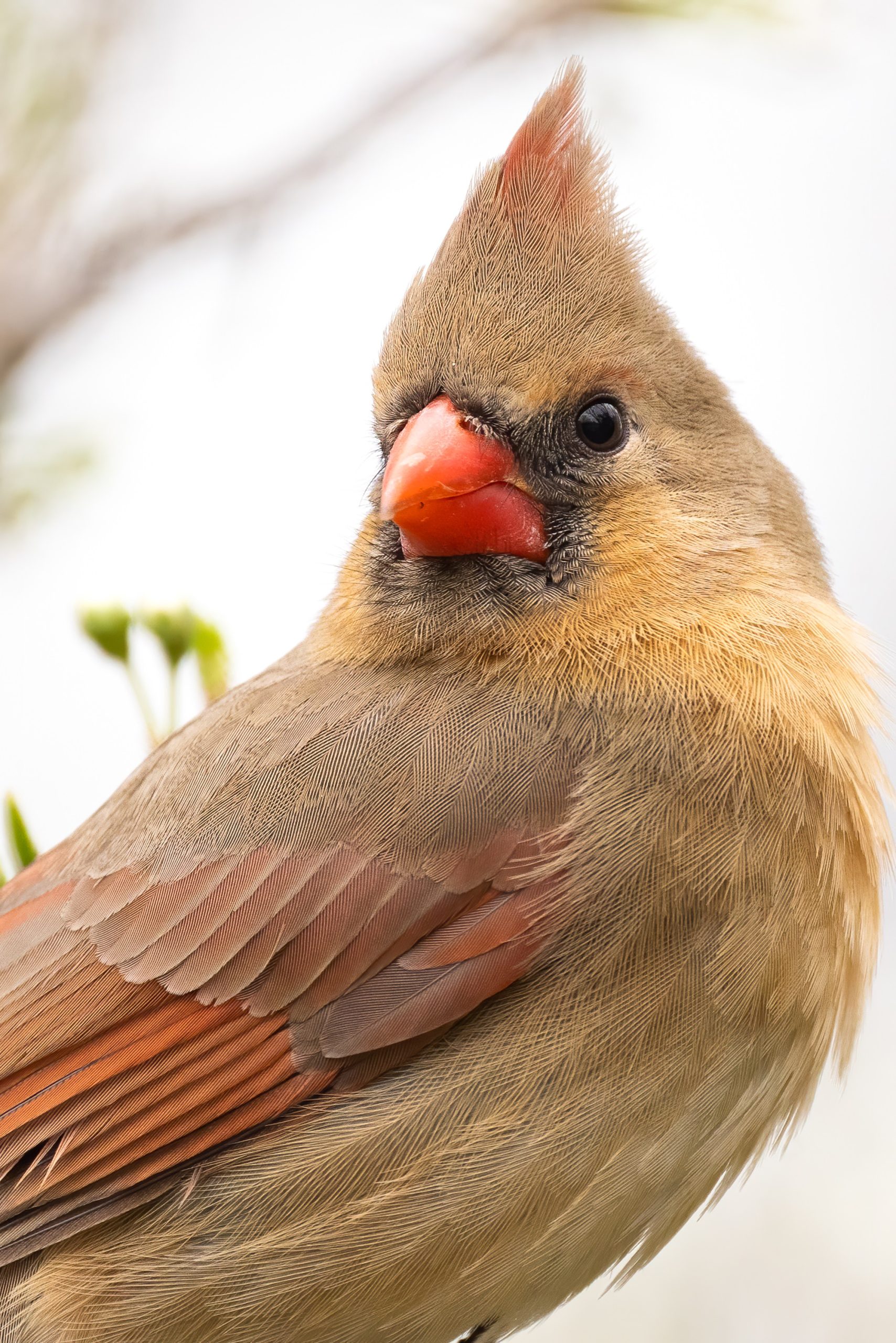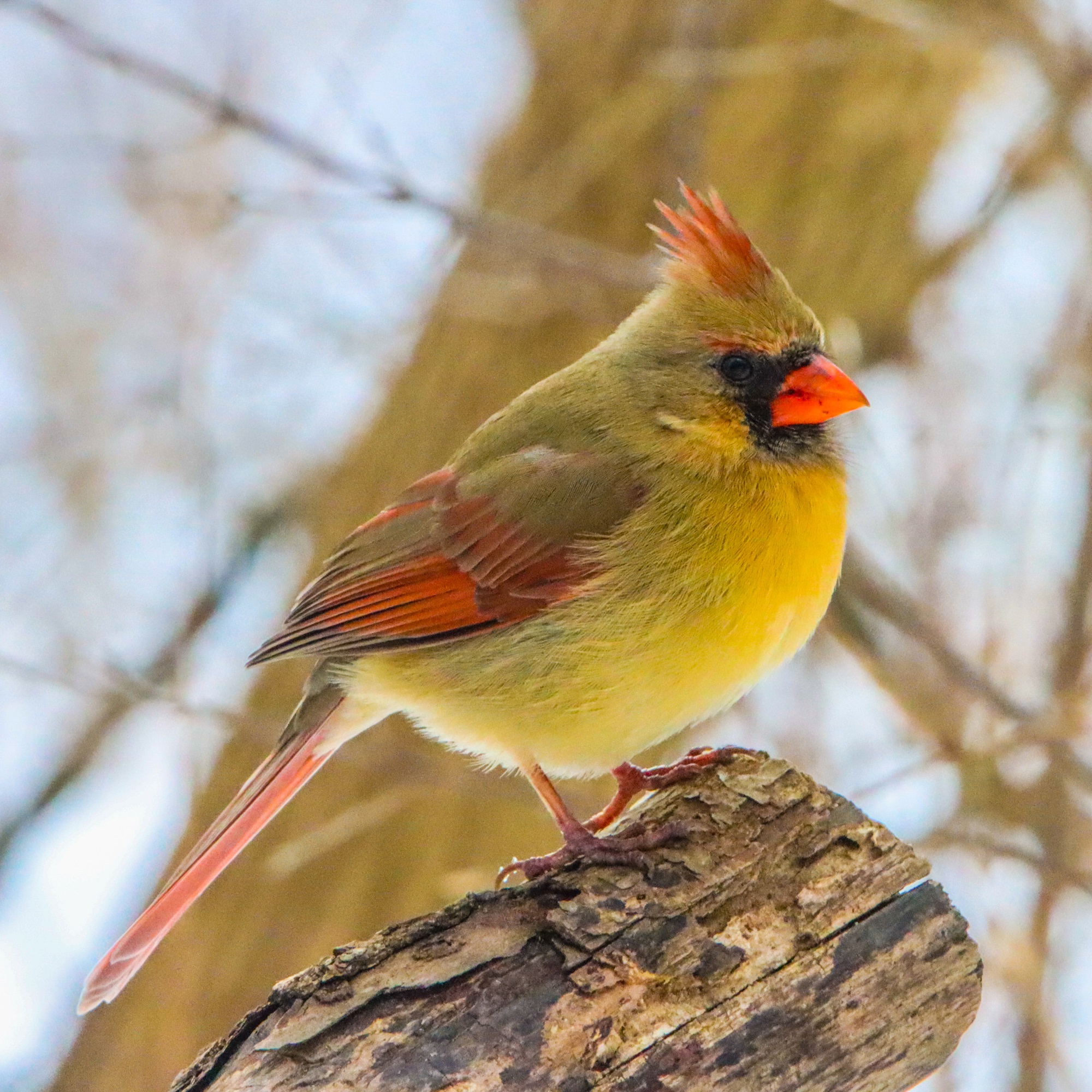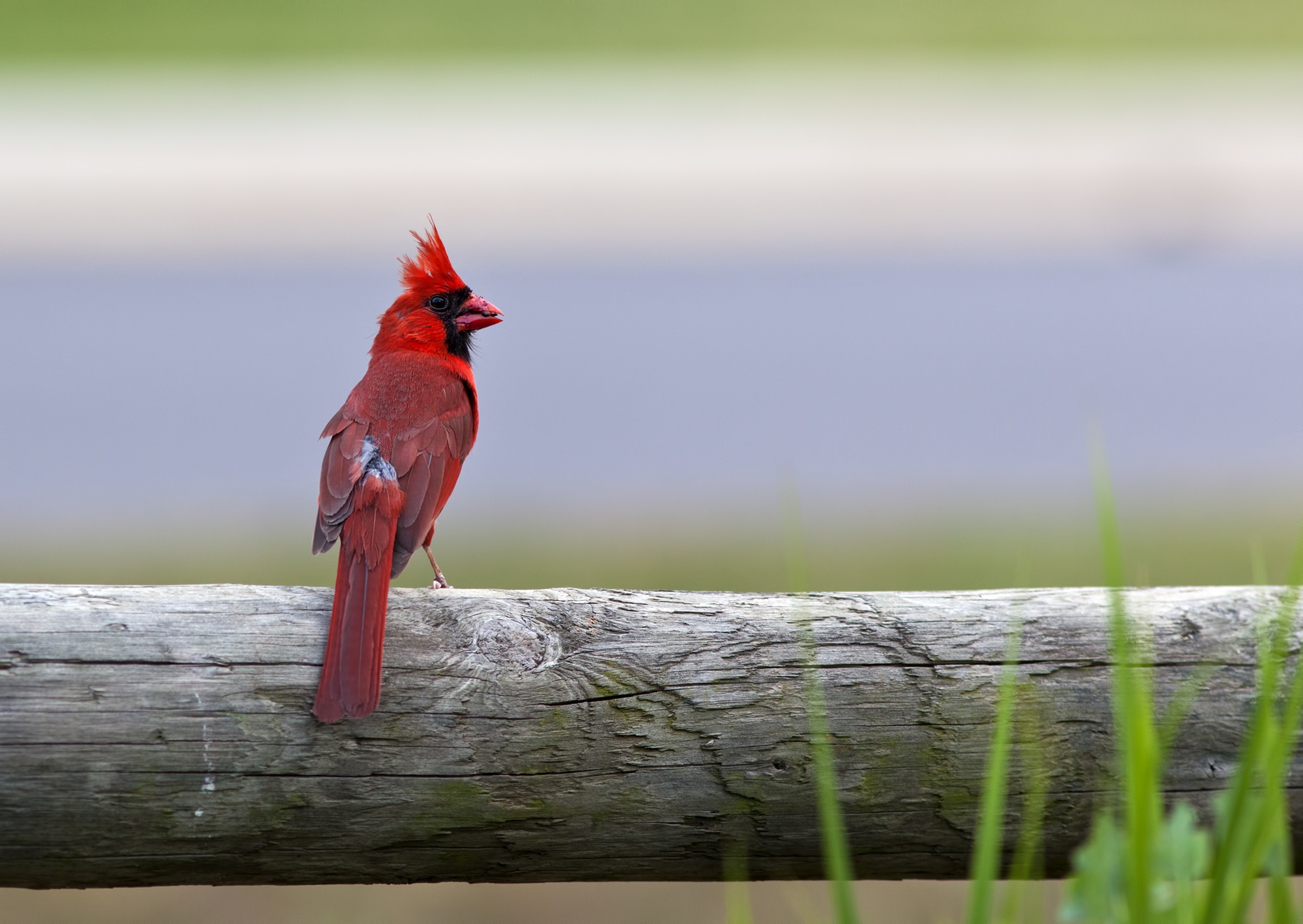Welcome to the Pet Breed Hub! Dive into the colorful life of the Northern Cardinal, a bird known for its striking red plumage and melodious songs. Perfect for our young explorers and bird enthusiasts!
Vibrant Colors: The Northern Cardinal’s Dazzling Display

Why So Bright? 🌈
Nature’s Masterpiece: The Northern Cardinal is a natural wonder! Males boast a fiery red coat, while females wear elegant shades of brown with red highlights. This isn’t just for beauty; it’s nature’s way of attracting mates and showing off health.
Color Changes: 🎨
Seasonal Shifts: Watch how their colors change with the seasons! Young birds start with duller shades, but as they grow, their colors become more vivid. It’s like watching a painter add bold strokes to a canvas.
Sunlight Secrets: ☀️
Sun-Kissed Feathers: Ever wonder why they’re so bright? Sunlight plays a trick! It reflects off their feathers, making them look even more brilliant. It’s a spectacular show, especially at sunrise and sunset.
A Rainbow Diet: 🍓
You Are What You Eat: Their diet is key! Cardinals love fruits and seeds, which are packed with carotenoids—these are the pigments that help give them their vibrant colors.
In the Snow: ❄️
Winter Wonders: In winter’s white landscape, their colors stand out even more. It’s like seeing a flash of red fire against the snow—truly a magical sight!
Musical Talents: The Northern Cardinal’s Melodious Songs

Nature’s Musicians 🎵
Unique Tunes: Each Northern Cardinal has its own song! Like having a personal playlist, these birds use different melodies for various purposes—attracting mates, warning of danger, or just saying “hello” to their neighbors.
Singing Lessons 🐦
Learning to Sing: Young cardinals learn to sing from their parents. It’s like going to bird school! They start with simple notes and gradually learn complex songs. Listen closely, and you might hear their practice sessions!
Duet Performances 🎤
Singing in Pairs: Cardinals often sing in duets. The male starts, and the female joins in, creating a harmonious partnership. It’s not just beautiful; it’s their way of strengthening their bond.
Seasonal Concerts 🌿
Time to Perform: Cardinals are most vocal during the spring and early summer. This is their time to shine, filling the air with their music. It’s their way of celebrating the warmer months and lush surroundings.
The Signature Song 🔊
“Cheer, Cheer, Cheer”: This is the cardinal’s hit single! Listen for a loud, clear whistle that sounds like “cheer, cheer, cheer.” It’s a classic tune in the bird world, and it’s a sure sign a cardinal is nearby.
Habitat and Lifestyle: Where Do Northern Cardinals Thrive?
Cozy Homes Everywhere! 🌳
Nature’s Neighbors: Cardinals love diverse homes! From dense forests to your backyard garden, they adapt to various environments. They’re not picky; they just need some trees or shrubs to call home.
Staycation Birds 🏡
Homebodies: Unlike many birds, cardinals don’t migrate. They stick to their birthplace all year, braving the cold winters and enjoying the warm summers. It’s like they’re always on a staycation!
Social but Shy 🐤
Friendly, Yet Private: Cardinals are social birds, often seen in pairs or small groups. But they’re also a bit shy. If you see them at a bird feeder, watch quietly to keep them around.
Territorial Tunes 🎶
Song for Space: Male cardinals sing to mark their territory. It’s their way of saying, “This is my space!” Their songs keep other males away and ensure a peaceful home for their families.
City Birds and Country Birds 🏙️🌄
Adaptable Dwellers: You can find cardinals in rural woodlands and busy city parks. Their adaptability to different habitats makes them one of the most beloved backyard birds.
Breeding and Lifecycle: The Cardinal’s Family Life
Love in the Air 💕
Mating Dance: When it’s time to find a mate, male cardinals put on a show. They perform dances and bring seeds to the females as gifts. It’s like their way of saying, “Will you be my partner?”
Nest Sweet Nest 🌿
Home Builders: Cardinals are excellent at building nests. Using twigs, grass, and even hair, they create cozy homes in bushes or trees. It’s a team effort, with both partners pitching in.
Egg-citing Times 🥚
Hatching New Life: Females lay 3–4 eggs, and then it’s time for incubation. They keep the eggs warm for about 12–13 days before the little chicks hatch, ready to explore the world.
Growing Up Fast 🐣
Feathered Growth: Baby cardinals grow quickly! In just 9–11 days, they’re ready to leave the nest. But don’t worry; Mom and Dad are still there to feed and protect them.
Family Ties 👪
Sticking Together: Cardinal families often stay close even after the chicks have grown. They’re like a tight-knit bird family, facing the world together.
Diet: What Do Northern Cardinals Eat?
Nature’s Buffet 🌰
Seed Lovers: Cardinals love seeds! Sunflower and safflower seeds are their favorites. It’s like having a favorite snack but for birds.
Fruity Feast 🍓
Berry Bonanza: Besides seeds, cardinals also munch on fruits and berries. They help themselves to nature’s dessert table, enjoying whatever is in season.
Insect Hunters 🐜
Bug Brigade: When it’s breeding season, cardinals switch to insects. Protein-packed meals like beetles and caterpillars are perfect for feeding their growing chicks.
Feeder Friends 🐦
Backyard Visitors: Love seeing cardinals. Set up a bird feeder with their favorite seeds. Watch as they become regular guests at your backyard diner!
Healthy Diet, Bright Feathers ✨
Colorful Cuisine: Their colorful diet helps keep their feathers bright and beautiful. Just like how eating healthy foods makes us feel good, it does the same for cardinals!
FAQs about the Northern Cardinal
1: What color are the Northern Cardinals?
Males are bright red, and females are brown with red highlights.
2: Can the Cardinals sing different songs?
Yes! They have a variety of songs for different purposes, like attracting mates or warning of danger.
3: Where do the Northern Cardinals live?
They live in woodlands, gardens, and even city parks, and they don’t migrate.
4: What do the Northern Cardinals eat?
Their diet includes seeds, fruits, and insects.
5: How do cardinals build their nests?
They use twigs, grass, and sometimes even hair to build nests in bushes or low trees.
6: Do both parents care for the young Cardinals?
Yes, both the male and female share the duties of feeding and protecting their chicks.
7: How long do the Northern Cardinals live?
They can live up to 15 years in the wild.
8: Do Northern Cardinals have predators?
Yes, they need to watch out for cats, hawks, and snakes.
9: Can Northern Cardinals recognize humans?
Yes, they can recognize and become familiar with people who feed them regularly.
10: How many eggs do Cardinals lay?
Female cardinals typically lay 3–4 eggs per clutch.
Conclusion
The Northern Cardinal isn’t just another bird; it’s a symbol of beauty, resilience, and melody. Their presence brightens our gardens, and their songs uplift our spirits. Let’s cherish and protect these feathered friends!
References and External Links
All About Birds: The Cornell Lab of Ornithology
Link: All About Birds – Northern Cardinal
This comprehensive resource offers detailed information about the Northern Cardinal, including its habitat, diet, and behavior.
National Audubon Society:
Link: Audubon – Northern Cardinal
A well-respected bird conservation organization provides insights into the Northern Cardinal’s life cycle and conservation status.

